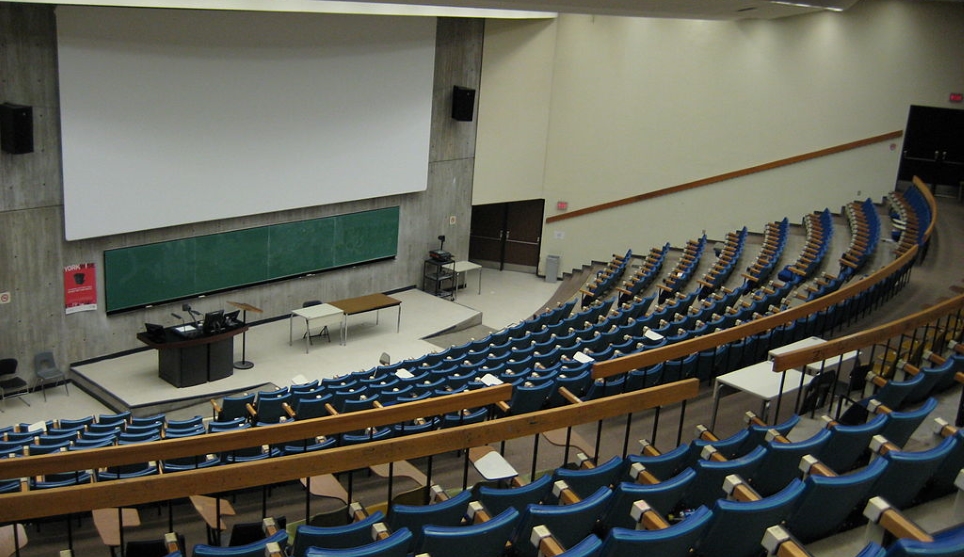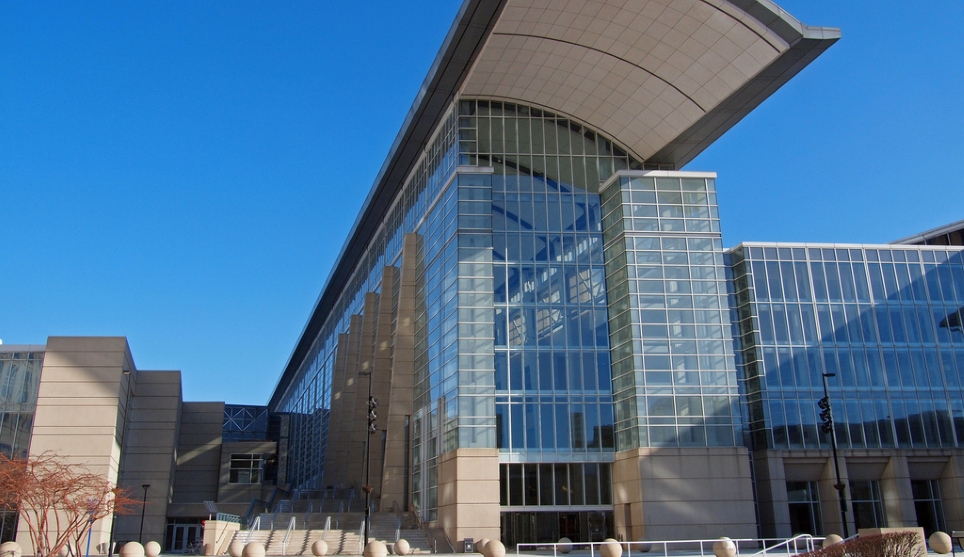
14 sessions to see at SfN 2015
This year’s SfN annual meeting is just around the corner. If you’re attending and still have some time to fill at the conference, Scientifica has picked out some suggestions for lectures, symposia and workshops to see at McCormick Place.
There are also a large number of poster and dynamic poster sessions throughout the show, creating an excellent scientific program for the event.
To plan your personal itinerary for the conference visit the Neuroscience Meeting Planner. For all other information related to the conference visit the Neuroscience 2015 website.
Lectures

1. Development and Reprogramming of Neuronal Diversity in the Central Nervous System (276) – Special Lecture
The mammalian central nervous system (CNS) contains an unparalleled diversity of neuronal subtypes, which are largely generated during embryonic development and maintained unchanged in the adult. This lecture will cover progress made in understanding the regulatory, molecular logic that shapes neuronal diversity in the embryo, consider its importance for CNS assembly and function, and discuss recent evidence for the unexpected capacity of central neurons to post-mitotically “reprogram” their class-specific features.
Date/Time: Monday 19 October, 11:30 am – 12:40 pm
Location: Hall B1
Presenter: Paola Arlotta
2. Immune Mechanisms of Synapse Loss in Health and Disease (367) – Presidential Special Lecture
How synapses are eliminated in the developing and diseased brain remains a mystery. During development, synaptic pruning is required for precise wiring, and emerging evidence implicates immune-related molecules and immune cells called microglia. This talk will review research on how these pathways regulate the formation, refinement, and elimination of specific axons and synapses during development. The discoveries suggest ways of protecting synapses in neurodegenerative and psychiatric disorders involving synapse loss.
Date/Time: Monday 19 October, 5:15 – 6:25 pm
Location: Hall B1
Presenter: Beth A. Stevens
3. Strange Synapses and Circuits of the Basal Ganglia (452) – Special Lecture
The basal ganglia are a phylogenetically old and evolutionarily conserved set of nuclei crucial for goal-oriented motor action. Nevertheless, many aspects of their circuitry, function, and regulation remain mysterious. Sabatini will present recent work from his group revealing complex and unexpected interactions between nuclei of the basal ganglia. These include the surprisingly widespread use of multiple fast-acting neurotransmitters by neuromodulatory systems. The results will be discussed in terms of action initiation and reinforcement.
Date/Time: Tuesday 20 October, 10:00 – 11:10 am
Location: Hall B1
Presenter: Bernardo Sabatini
4. Embracing an Era of Unprecedented Advances in Neuroscience (553) – Special Presentation
Despite many challenges, the last decade has seen tremendous progress in neuroscience. To support continued progress, the National Institutes of Health (NIH) has taken a lead role in implementing the President’s Brain Research through Advancing Innovative Neurotechnologies (BRAIN) Initiative. The NIH Director will discuss how his agency, working with the neuroscience community, is catalysing the development of technologies to provide dynamic pictures of the brain, both in disease and in health. He will also examine challenges that cut across biomedical disciplines, and reflect upon opportunities for neuroscientists to face such challenges and generate tomorrow’s advances.
Date/Time: Tuesday 20 October, 4:00 – 5:00 pm
Location: Hall B1
Presenter: Francis Collins
5. Grid Cells and Cortical Maps for Space (554) – Presidential Special Lecture
The medial entorhinal cortex (MEC) is part of the brain’s circuit for dynamic representation of self-location. The metric of this representation is provided by grid cells - cells with spatial firing fields that tile environments in a periodic hexagonal pattern. This lecture will discuss the morphological identity of cells that express this pattern, how they are organized, how they interact with the environment, and how grid cells and place cells contribute to a wider circuit for goal-directed navigation.
Date/Time: Tuesday 20 October 5:15 – 6:25 pm
Location: Hall B1
Presenter: May-Britt Moser
Symposia
1. Circadian Entrainment Mechanisms and Consequences (017)
This nanosymposium will look at new research into the key areas of the brain responsible for setting the circadian rhythm, particularly the suprachiasmatic nucleus. It will then examine the consequences of disruption to these entrainment mechanisms and the impact this has on us.
Date/Time: Saturday 17 October, 1:00 – 3:45 pm
Location: S404
Chair: Mary Harrington
2. Alzheimer's Disease: Experimental Therapeutics (011)
The increased incidence of Alzheimer’s disease is becoming more prevalent more research is being carried out on experimental therapies. This nanosymposium will look into some these potential new treatments and treatment pathways.
Date/Time: Saturday 17 October, 1:00 – 4:15 pm
Location: S403
Chair: Giulio Taglialatela
3. Dorsal Striatum: From Microcircuits and Modulation to In Vivo Function (006)
The dorsal striatum receives sensorimotor and higher-order information through a wide range of synaptic inputs, including those from the cortex and the thalamus. The integration of this information is fine-tuned by neuromodulators affecting cortical and subcortical motor systems. This minisymposium will present data from connected areas of research that aim at understanding the cellular diversity, connectivity, modulation, and in vivo function of the dorsal striatal network and how malfunction might lead to disease.
Date/Time: Saturday 17 October, 1:30 – 4:00 pm
Location: S103
Chairs: Jens Hjerling-Leffler, David Robbe
4. All-Optical Interrogation of Neural Circuits (454)
This symposium will describe the nexus of recent dramatic developments in optogenetic probes, genetically encoded activity sensors, and novel microscopies, which together allow the activity of neural circuits to be recorded and manipulated using entirely light. Such an “all-optical” approach promises to illuminate many fundamental challenges in neuroscience, including transforming our search for the neural code and the links between neural circuit activity and behaviour.
Date/Time: Tuesday 20 October, 8:30 – 11:00 am
Location: S100B
Chairs: Michael Hausser, Valentina Emiliani
5. Human iPSC-Derived Cells for Modelling Neurodegenerative Disease and Drug Discovery (185)
Human induced pluripotent stem cells (iPSCs) provide unprecedented access to neurons and glia to study neurodegenerative disorders. For the first time, researchers have sufficient human material, derived from specific patient populations, to perform studies in the cell types of interest. This symposium will highlight research that demonstrates the broad utility of iPSC technology in developing better tools, models, and biomarkers for innate, induced, and infectious neurodegenerative disorders.
Date/Time: Tuesday 20 October, 1:30 – 4:00 pm
Location: S100A
Chairs: Eugenia Jones, Eric Chiao
6. Optogenetic Dissection of the Basal Forebrain Neuromodulatory Control of Cortical Activation, Plasticity, and Cognition (642)
The basal forebrain (BF) is a major ascending arousal centre and has long been implicated in cognitive functions such as attention and learning. Recent studies using optogenetics to target specific BF cell-types have led to a renaissance in this field and are beginning to yield new insights into circuit mechanisms during behaviour. This minisymposium will discuss recent advances in the roles of BF cholinergic and non-cholinergic neurons in cognition via their dynamic modulation of cortical activity.
Date/Time: Wednesday 21 October, 8:30 – 11:00 am
Location: S100B
Chair: Shih-Chieh Li, Adam Kepecs
Workshops & Meetings

1. The Income Achievement Gap: Insights from Cognitive Neuroscience (ME11)
Educational achievement is highly correlated with economic opportunity. However, the “income achievement gap” – the difference in academic achievement between students from higher- and lower-income backgrounds – is substantial and is growing in the United States and around the world. This roundtable will consider new findings about the brai, and how they correlate with the income achievement gap, as well as ideas on how best to support the educational attainment of students from low-income households.
Date/Time: Sunday 18 October, 1:00 – 3:00 pm
Location: N229
2. Tackling Challenges in Scientific Rigor: The (Sometimes) Messy Reality of Science (PDW16)
Rigorous conduct of science is the cornerstone of the scientific endeavour, touching on established practices for experimental design, data analysis, and transparency, as well as other issues like publishing and funding pressures. Knowing how to address these issues is critical for a successful career in science. This workshop will explore practical examples of the challenges and solutions in conducting rigorous science from the real-life examples of neuroscientists at various career stages. It will focus on development of the interpersonal, scientific, and technical skills necessary to address various issues in scientific rigor, such as what to do when you can’t replicate a published result, how to get support from a mentor, and how to cope with various career pressures that might affect the quality of your science.
Date/Time: Sunday 18 October, 2:00 – 4:00 pm
Location: S101
Organisers: John Morrison, Barbara Lorn
3. Exploring New Communications Channels: Science Blogging (PDW18)
This session will provide members with guidance on blogging about science, including how to launch a blog, write effective blog posts, and expand audience reach via social media and other online channels. Guests will include science bloggers who share their personal experiences about what works and does not work in engaging online audiences.
Date/Time: Monday 19 October, 9:00 – 11:00 am
Location: S101
Organiser: Scott Thompson
4. Proactive Strategies to Increase the Positive Public Perception of Animals in Research (ME13)
As scientists become increasingly visible and engaged with the public through blogs, citizen science, traditional media, and other outlets, there is also increasing interest in open communication to gain public support for animal research and to underscore its critical contribution to scientific and medical progress. This panel will answer questions like: How can scientists and organizations engage the public and speak effectively about animal research? What strategies and venues (both novel and time-tested) are being employed to engage different audiences and how can interested scientists learn and contribute? What challenges exist in this area and how are different groups addressing them?
Date/Time: Tuesday 20 October, Midday – 2:00 pm
Location: N427
Organiser: Michael E. Goldberg
If you found this article interesting, why not read our Chicago Information Guide and our top restaurants for SfN 2015.

)